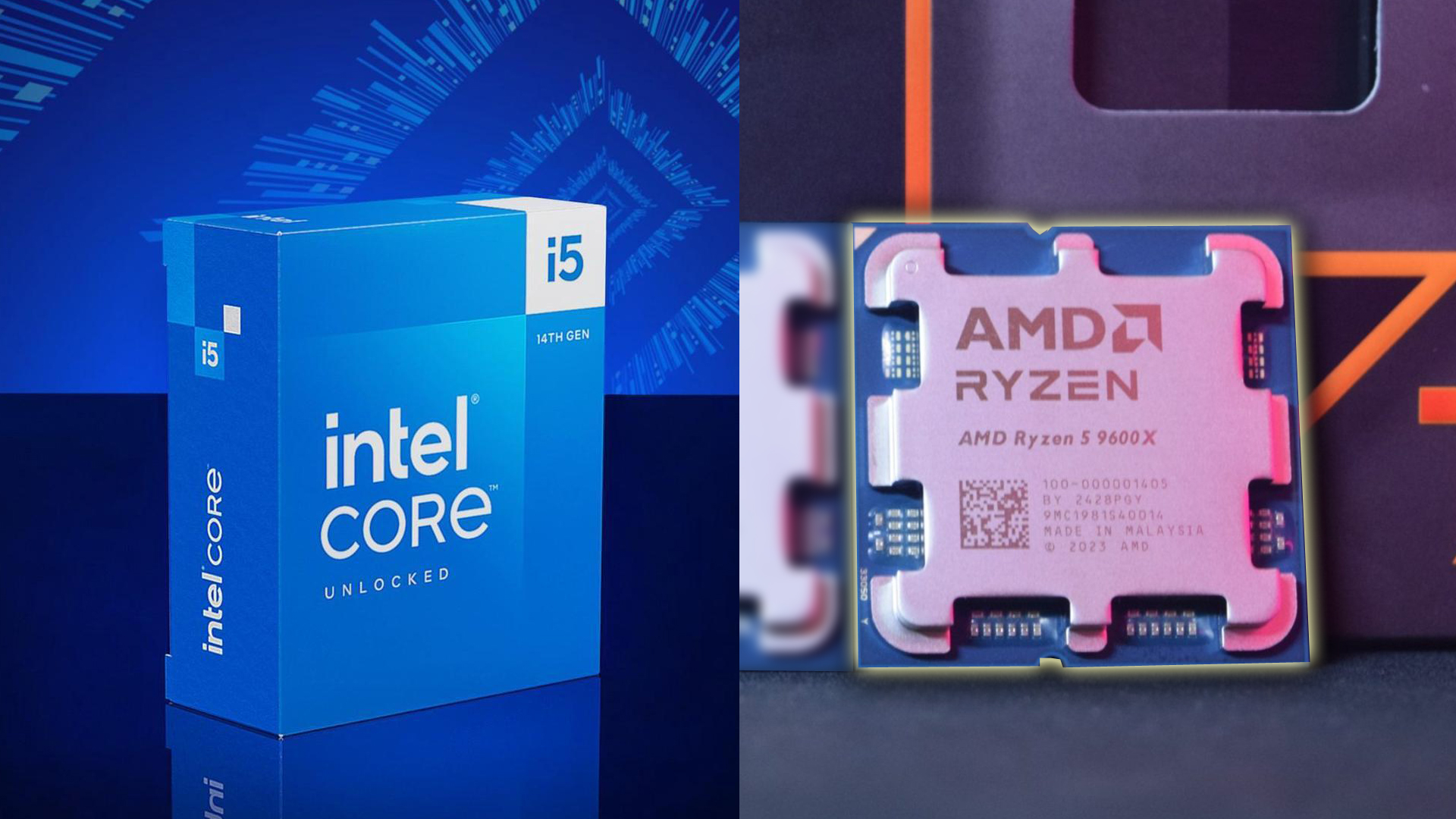Four Reasons Why Ryzen 5 9600X Is Able To Outsell Core i5 14600K Despite Fewer Cores (And Slower Productivity)

There was a time when buying an Intel CPU was a no-brainer. Even though AMD’s first attempt to lure gamers towards the Ryzen 1000 series didn’t do the job as expected, it took around 6-7 years for AMD to totally dominate what was thought to be Intel’s unchallenged territory. It’s not that Intel CPUs don’t perform well, but it’s just that there are a lot of factors that usually lead gamers towards Team Red, which is often overlooked when we compare two direct competitors from both CPU makers.
While gamers choosing the Ryzen 7 7800X3D or the Ryzen 7 9800X3D over the Intel Core i7 14700K or the Core Ultra 9 285K makes sense, there isn’t really a performance advantage when going with Ryzen 9600X over the Core i5 14600K. Then why are gamers still buying the 6-core/12-thread CPU that is easily demolished by the 14-core/20-thread Intel processor for the same price?
The difference in their sales is huge, and the 9600X continues to sell like hotcakes in most parts of the world. However, the reasons for such a striking difference between the two CPUs often go unnoticed. If you think the Ryzen 9600X is outselling the i5 14600K because of “better” gaming performance, you might be mistaken. Here are the top four reasons we think gamers often prefer the 9600X over the i5 14600K, despite offering fewer cores and lower productivity performance.
For Most, Gaming is All That Matters
It’s less about the number of cores and more about the gaming-focused performance that users value the most. The majority of gamers know that a 6-core CPU is sufficient even for modern gaming, and while an 8-core or a 12-core CPU will be beneficial for non-gaming tasks, not everybody needs it. For $200, the Ryzen 5 9600X is the fastest 6-core CPU, and in gaming, it’s simply among the top SKUs for this price point.
Even though the 9600X doesn’t improve the gaming performance much over its predecessor, it offers improvements in things like IPC and also offers better thermals. For many, it’s impressive to see a 6-core CPU competing head-to-head with a 14-core productivity monster in gaming (and sometimes beating it), which is exactly what they are looking for. It’s usual to see users preferring even a slightly better component, even if it’s more expensive. For instance, the Ryzen 7 7800X3D offers much better value vs the Ryzen 7 9800X3D since it currently lists for around $100 lower price. Still, the Ryzen 9800X3D outsells the 7800X3D due to those small uplifts.
Hence, “gaming” performance dictates the success of a component, but since the Core i5 14600K is on par with the 9600X, there are more factors that help the 9600X edge out the 14600K as discussed below.
Extended Platform Support is a Key Advantage
AM5 platform’s longevity is the biggest factor that compels the majority of 9600X buyers to skip the Core i5 14600K. AMD is known to keep a particular platform alive for significantly longer, while Intel hardly keeps the same socket in use for more than 2-3 years. LGA 1700 is an exception since it’s probably one of the few Intel platforms that saw the launch of three generations of processors. Intel Core 14600K is, unfortunately, among the last to exist for LGA 1700, and can be off-putting for many users.
AM5, on the other hand, is going to continue its reign for at least 2-3 years from now, considering we have reports of Zen 6 being supported on the platform. Some rumors also suggest Zen 7 compatibility, which is what a lot of gamers like about AM5, allowing them to upgrade to a better processor in the next 2-3 years. However, this doesn’t necessarily mean it’s an advantage for everyone, because the reality is that a large section of 9600X users won’t be upgrading in the next 2-3 years. Usually, it’s the enthusiasts who upgrade with every new generation to remain at the cutting edge.
Nonetheless, considering that AMD is going to release Zen 6 or even Zen 7 for the AM5 platform before discontinuing it, it’s likely that a much higher generational uplift awaits when upgrading to an X3D chip from future generations. The AM4 platform is the classical example of how users benefited from longevity. Those who bought the first or second-gen Ryzen processors in 2017 and later were able to upgrade to CPUs like Ryzen 5 5800X3D or 5700X3D, allowing them to keep pace with Ryzen 7000 and Intel’s 13th/14th gen offerings.
Competitive Gaming Performance at Higher Power Efficiency
Power efficiency might not be the biggest reason why gamers choose 9600X, but it’s definitely a valid one. Core i5 14600K is power hungry and can run hotter. You definitely need a better cooling solution to cool those 14 cores, and even though some decently powerful single-tower coolers can manage that, it’s going to be a bit easier with the 9600X. As for the efficiency, the Ryzen 9600X can be easily 15-20% more power-efficient than the 14600K while offering the same or slightly better gaming performance.
It’s not much, but it’s still a considerable factor since the 9600X can offer more FPS per watt than the 14600K. This is also true when we compare other Ryzen 7000 and 9000 series processors against Intel’s 13th and 14th gen CPUs, especially the Ryzen X3D chips, which are unbeatable at power efficiency.
AMD is the NVIDIA of CPUs
It’s a common phenomenon to see people cheering for the underdog when the threat of monopoly arises. AMD didn’t seem like a big threat nearly a decade ago, but the launch of its first Zen-based processors gave gamers hope, as it marked the start of a well-planned strategy to refine its processors to finally take a big chunk of the market share. With impressive generational uplifts every Zen generation, it looked as if AMD was unstoppable, and with the launch of the innovative 3D V-Cache technology, AMD did something that Intel has yet to counter.
AMD won the trust of gamers, positioned itself as the “true” gaming king of CPUs, and with Intel failing to appease gamers with Arrow Lake chips, the majority don’t trust the Blue Team as they did before. “Ryzen” is like the “GeForce” for gamers. AMD became the New NVIDIA of CPUs, and despite Intel’s competitive offerings in the budget segment, gamers tend to lean towards AMD’s chips, thanks to its stronger branding and the trust it has built over the years.



